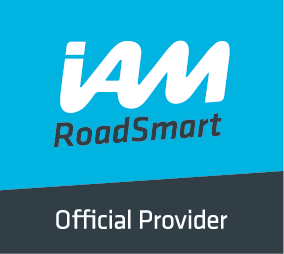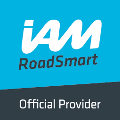Driving with technology: tips from IAM RoadSmart
Mobile communications and GPS systems used as sat-navs are becoming very common in cars. Whether you are connecting your Bluetooth to blast tunes or looking for the nearest Waitrose, these have become a fundamental part of the daily drive for many of us.
This week’s tips give advice on using technology to complement your driving, from IAM RoadSmart’s head of driving and riding standards Richard Gladman.
- Whilst a sat-nav aids in getting you from A to B try to not become reliant on it. It is important to pay attention to road signs and the road ahead, in case there’s a diversion sign that the device may not have picked up
- Get to know your sat-nav before you set off and always programme it when stationary. Many people trust their sat-navs not to get them lost but you also need to know about roadworks, diversions and places to stop. Keep an old fashioned map to ensure that you limit the chances of going completely off track
- Create your playlist before you start your journey. Taking your eyes of the wheel to look or adjust your music can often prove to be hazardous. It only takes a few seconds distraction to cause an accident. Remember to also keep your music down in some circumstances; your hearing can keep you safe, so be prepared to turn the music off
- Don’t make or take calls when driving and never text or engage with social media on your smartphone. Through extensive research it has been shown that making calls, evenhands-free affects concentration and slows reactions when driving
- Some vehicles have the ability to create a Wi-Fi zone allowing internet access. This should be used as a luxury for passengers whilst ensuring they do not distract you as the driver. For instance a computer screen reflecting in the dark is a dangerous distraction
Richard said: “The latest driver assistance systems can be the perfect back-up to cover our occasional human failings but are no substitutes for concentration. The driver must always remain connected to what is going on around them. Multi-tasking is a myth and all too often that glance away can become a complete switch-off to an emerging risk. No text, tweet, check in or status update is worth crashing for.”
Notes to editors:
- Richard Gladman is IAM RoadSmart’s head of driving and riding standards.
- IAM RoadSmart has a mission to make better drivers and riders in order to improve road safety, inspire confidence and make driving and riding enjoyable. It does this through a range of courses for all road users, from online assessments through to the advanced driving and riding tests. IAM RoadSmart is the trading name of all businesses operated by the UK’s largest road safety charity, the Institute of Advanced Motorists (IAM) and was formed in April 2016 combining the IAM, IAM Drive & Survive, PDS and IAM Driver Retraining Academy. The organisation has 92,000 members and campaigns on road safety on their behalf. At any one time there are over 7,000 drivers and riders actively engaged with IAM RoadSmart’s courses, from members of the public to company drivers, while our Driver Retraining Academy has helped 2,500 drivers to shorten their bans through education and support programmes.
To find out more about IAM RoadSmart products and services visit the new website www.iamroadsmart.com
To find out the name of your own local IAM RoadSmart group please visit: https://wwwiamroadsmart.com/local-groups
Media contacts:
Further information from:
IAM RoadSmart press office – 020 8996 9777
[email protected] / www.iamroadsmart.com
ISDN broadcast lines available
Follow us:
On Facebook: www.facebook.com/IAMRoadSmart
On Twitter: @IAMRoadSmart
ENDS ALL

